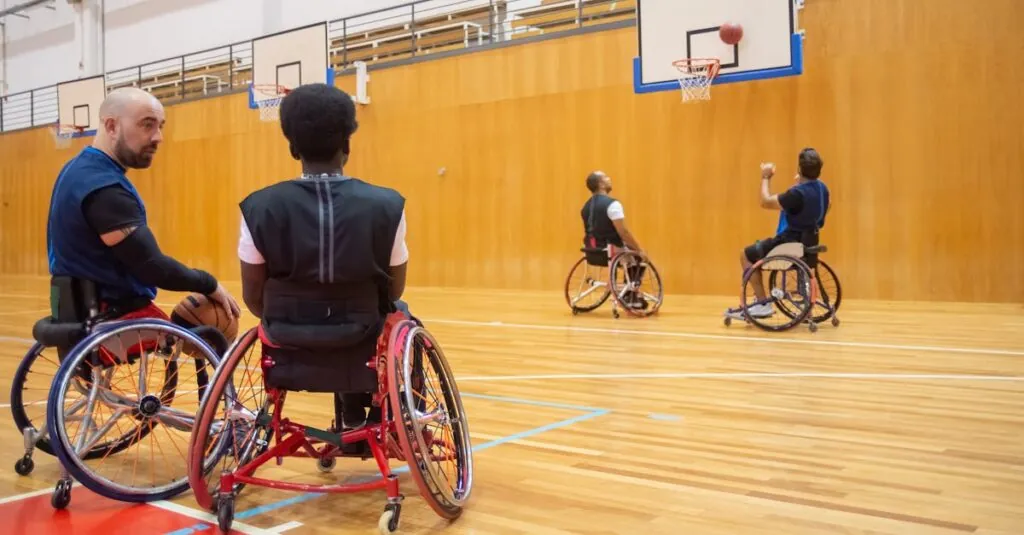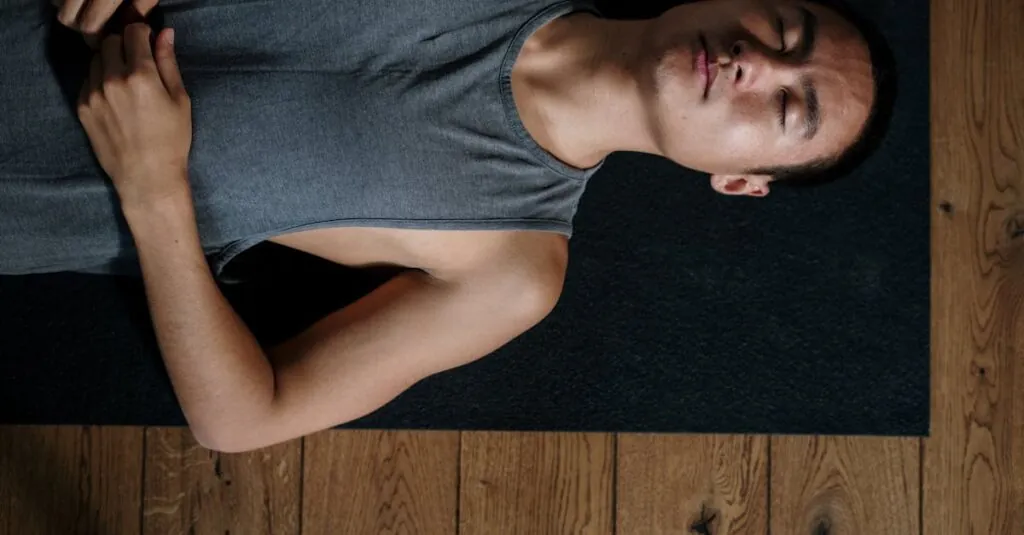Mobility drills might sound like a fancy term from a fitness guru’s playbook, but they’re the secret sauce to unlocking your body’s full potential. Imagine moving through life like a well-oiled machine instead of a rusty tin can. Whether you’re an athlete, a weekend warrior, or just trying to avoid that awkward shuffle at the grocery store, mobility drills are your ticket to smoother, more fluid movement.
Table of Contents
ToggleWhat Are Mobility Drills?
Mobility drills encompass exercises designed to improve the range of motion in joints and muscles. These movements focus on enhancing flexibility, coordination, and overall body awareness. Commonly included in fitness routines, they play a crucial role in injury prevention.
Stretching and strengthening go hand in hand in mobility drills. It involves dynamic movements that promote muscle elasticity, contributing to better mobility. Exercises like hip circles, ankle rolls, and arm swings fall under this category. Each drill targets specific muscle groups, facilitating smoother motion.
Athletes often incorporate mobility drills into their warm-up routines. Improved mobility leads to enhanced performance during physical activities. Everyday movers also benefit from these exercises, as they can alleviate stiffness and promote better posture.
Regular practice fosters adaptability in activities such as sports and daily tasks. Stretching the hip flexors, for instance, can assist runners in achieving more efficient strides. Enhancing shoulder mobility can lead to greater ease during overhead movements.
Integrating these drills into daily routines can yield significant results. Performing them consistently allows the body to adapt and respond more effectively to various demands. Individuals may find that the benefits ripple through their entire fitness regimen, making mobility drills a cornerstone of any workout program.
Benefits of Mobility Drills
Mobility drills provide several advantages for individuals seeking to enhance their physical capabilities. Key benefits include improved flexibility and enhanced range of motion.
Improved Flexibility
Improved flexibility results from consistent mobility drill practice. Individuals notice increased elasticity in muscles and connective tissues, allowing for easier movement. Dynamic stretching routines, such as leg swings and torso twists, actively engage muscle fibers, promoting flexibility over time. Greater flexibility aids in daily activities and prevents discomfort during physical exertion. Athletes experience a notable reduction in muscle tightness, leading to superior performance. Incorporating mobility drills into a warm-up routine effectively enhances athletic potential. Practicing these exercises regularly fosters a body that moves fluidly and adapts to various movements, ensuring that flexibility becomes a natural part of one’s physical repertoire.
Enhanced Range of Motion
Enhanced range of motion occurs through targeted mobility drills that focus on joint health. Individuals find that these exercises directly increase how far joints can move in different directions. Exercises, like hip circles and shoulder dislocates, engage specific joints, promoting their lubrification and overall function. This increased range protects against injuries during workouts and everyday activities. A broader range of motion enables individuals to perform movements with greater ease and efficiency. Athletes especially benefit, as improved joint mobility contributes to better overall performance and reduces the likelihood of strains. Committing to structured mobility routines results in long-lasting enhancements that support active lifestyles.
Types of Mobility Drills
Mobility drills come in various forms that target different aspects of movement. Both static and dynamic mobility drills play important roles in enhancing physical efficiency and flexibility.
Static Mobility Drills
Static mobility drills involve holding specific positions to improve flexibility and joint range. Examples include seated forward bends and butterfly stretches, which focus on areas like hamstrings and hips. These drills promote deep muscle relaxation, aiding recovery between workouts. Holding each position for 15 to 30 seconds enhances muscle elasticity and supports overall joint health. Practicing static mobility drills regularly increases comfort in daily activities by promoting a greater range of motion and reducing injury risks.
Dynamic Mobility Drills
Dynamic mobility drills emphasize movement through different planes, improving overall body coordination. Examples include high knees and walking lunges, which actively engage multiple muscle groups. Such drills prepare the body for physical activities by gradually increasing heart rate and flexibility. Engaging in dynamic movements for 10 to 15 minutes before workouts enhances performance and reduces stiffness. These drills also improve balance and stability, essential for athletes and everyday activities alike. Consistent practice contributes to better functional movement patterns, supporting all physical endeavors.
How to Incorporate Mobility Drills into Your Routine
Integrating mobility drills into daily routines enhances flexibility and performance. Regular practice ensures effective implementation and maximizes benefits.
Frequency and Duration
Consistency plays a vital role in mobility drill effectiveness. Engaging in these drills three to five times each week promotes noticeable improvements. A recommended duration of 10 to 15 minutes per session allows for a thorough warm-up without overwhelming the body. Athletes often utilize this time before workouts, while others can incorporate these drills throughout the day. Small, targeted sessions during breaks or before physical activities yield significant enhancements in movement quality.
Best Practices
Adapting proper techniques enhances mobility drill outcomes. Begin with a focused warm-up that raises heart rates and prepares the body. Prioritize form and control during each exercise to maximize benefits and reduce injury risk. Incorporating a variety of drills engages different muscle groups, ensuring balanced development. Incorporate breathing techniques to promote relaxation and improve overall performance. Assess progress regularly and adjust routines based on individual needs and goals, maintaining a flexible approach for optimal results.
Mobility drills are a vital component of any fitness routine. They not only enhance flexibility and range of motion but also play a crucial role in preventing injuries. By incorporating both static and dynamic exercises, individuals can target specific muscle groups and joints, leading to improved overall performance.
Regular practice of these drills fosters adaptability in daily activities and sports. Whether an athlete or someone looking to stay active, committing to a structured mobility routine can yield significant benefits. With just a few minutes each day, anyone can experience reduced stiffness and enhanced movement quality. Embracing mobility drills is a smart step towards a healthier, more active lifestyle.









